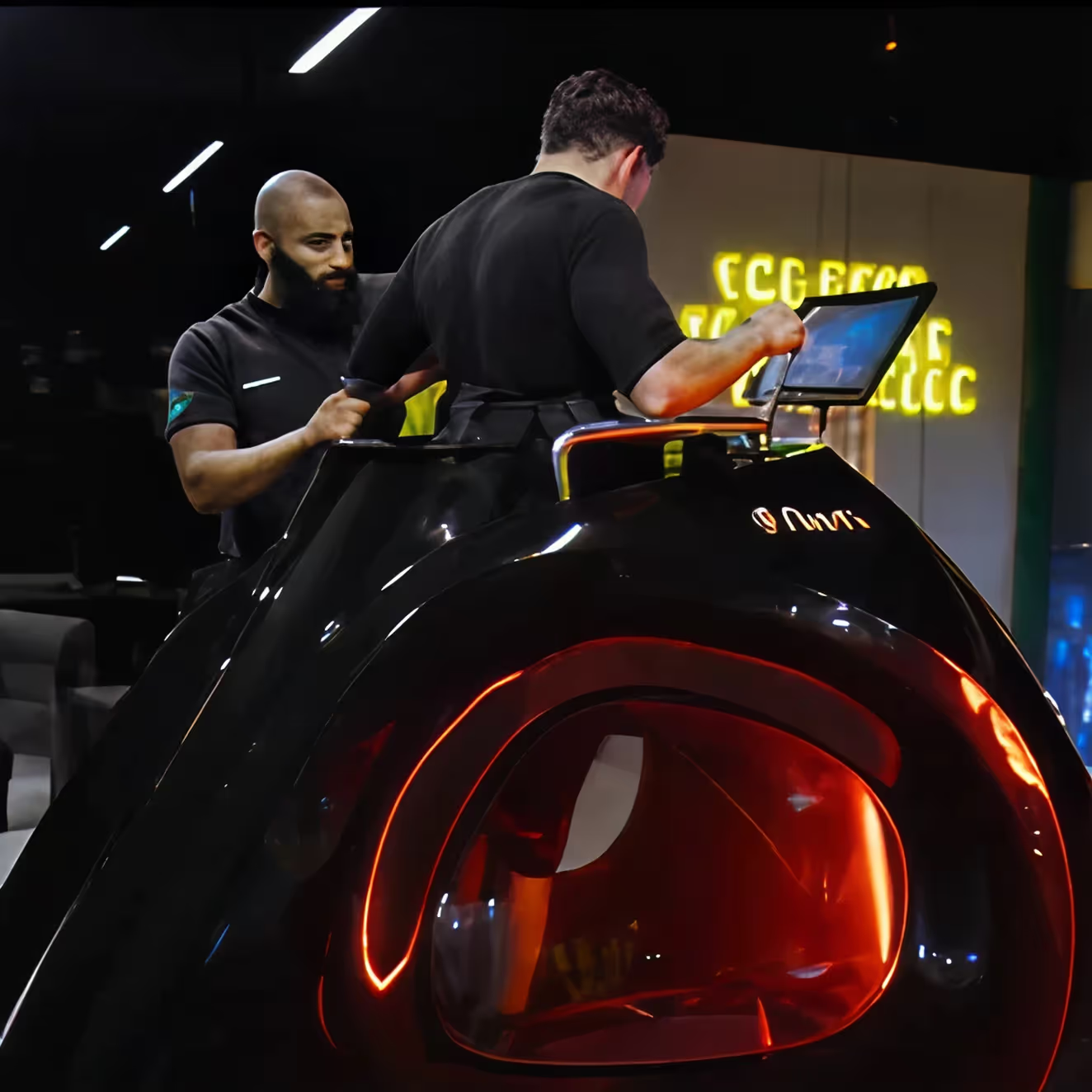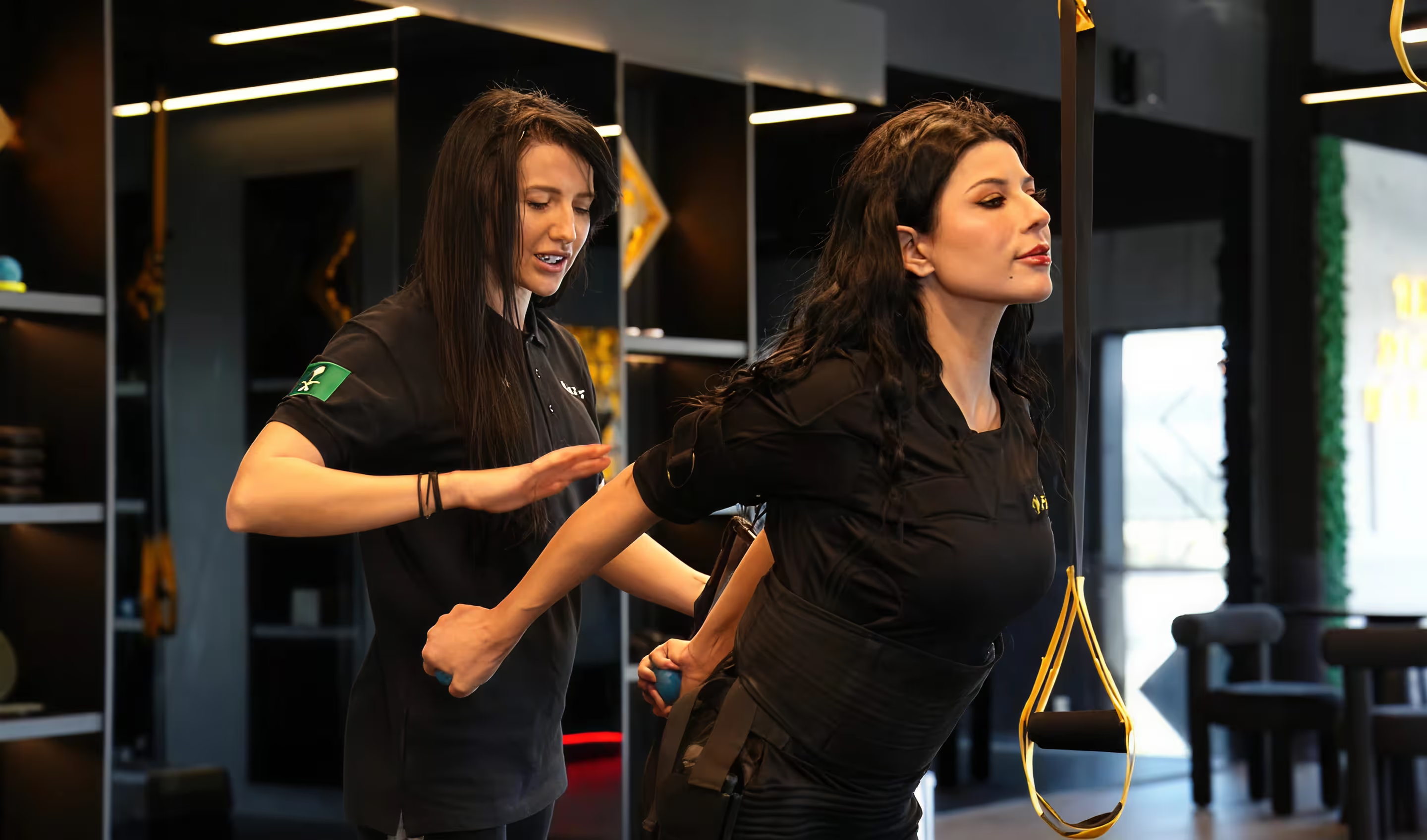Use Of EMS In Patients With Cancer
The results showed significant improvements in muscle mass, muscle strength, and body fat percentage.
Introduction
In recent years, Electrical Muscle Stimulation (EMS) has rapidly emerged as a revolutionary tool in the world of athletic performance and rehabilitation. As traditional training methods evolve, EMS provides a science-backed, time-efficient alternative designed to optimize muscle engagement, improve strength, and accelerate recovery. But how effective is it, really?
Understanding EMS and Its Mechanism
EMS works by sending low-frequency electrical impulses to muscles, causing them to contract in a controlled and targeted manner. This mimics natural muscle activation during exercise, but with a much higher recruitment of muscle fibers—up to 90% compared to the 30–60% typically activated during conventional training. The result is a more intense and efficient workout in a fraction of the time.
Strength Gains Backed by Research
Multiple studies have shown that EMS can significantly increase muscle strength in both trained athletes and beginners. The technology is particularly effective in isometric strength development and explosive power, making it ideal for sprinters, weightlifters, and other strength-dependent disciplines.A 2022 study published in the Journal of Sports Science & Medicine demonstrated a 24% increase in lower body strength after just six weeks of EMS training. Another study reported noticeable hypertrophy and enhanced neuromuscular efficiency among elite athletes using EMS as a complement to their traditional workouts.
Application for Athletic Performance
For athletes, time is often the biggest barrier. EMS addresses this challenge with short, high-impact sessions—typically 20 minutes—that can be integrated seamlessly into existing routines. It’s particularly effective during injury recovery phases when conventional resistance training may not be feasible.EMS also supports muscle symmetry and balance, often overlooked in standard training programs. By targeting specific muscle groups, trainers can customize sessions to address imbalances, reduce the risk of injury, and enhance overall performance.
Who Should Use EMS?
EMS is not a replacement for traditional training but rather an advanced supplement. It’s most effective when paired with functional movement and sport-specific conditioning. Professional athletes, strength coaches, and physiotherapists are increasingly turning to EMS to fill the gaps in their training protocols.
Conclusion
EMS is transforming the way athletes train, offering a measurable and accelerated path to strength development. With proven benefits in muscle recruitment, recovery, and overall performance, EMS represents a new frontier in sports science. Whether you’re an elite athlete or a weekend warrior, incorporating EMS into your routine could be the missing link to reaching your full potential.
Introduction
In recent years, Electrical Muscle Stimulation (EMS) has rapidly emerged as a revolutionary tool in the world of athletic performance and rehabilitation. As traditional training methods evolve, EMS provides a science-backed, time-efficient alternative designed to optimize muscle engagement, improve strength, and accelerate recovery. But how effective is it, really?
Understanding EMS and Its Mechanism
EMS works by sending low-frequency electrical impulses to muscles, causing them to contract in a controlled and targeted manner. This mimics natural muscle activation during exercise, but with a much higher recruitment of muscle fibers—up to 90% compared to the 30–60% typically activated during conventional training. The result is a more intense and efficient workout in a fraction of the time.
Strength Gains Backed by Research
Multiple studies have shown that EMS can significantly increase muscle strength in both trained athletes and beginners. The technology is particularly effective in isometric strength development and explosive power, making it ideal for sprinters, weightlifters, and other strength-dependent disciplines.A 2022 study published in the Journal of Sports Science & Medicine demonstrated a 24% increase in lower body strength after just six weeks of EMS training. Another study reported noticeable hypertrophy and enhanced neuromuscular efficiency among elite athletes using EMS as a complement to their traditional workouts.
Application for Athletic Performance
For athletes, time is often the biggest barrier. EMS addresses this challenge with short, high-impact sessions—typically 20 minutes—that can be integrated seamlessly into existing routines. It’s particularly effective during injury recovery phases when conventional resistance training may not be feasible.EMS also supports muscle symmetry and balance, often overlooked in standard training programs. By targeting specific muscle groups, trainers can customize sessions to address imbalances, reduce the risk of injury, and enhance overall performance.
Who Should Use EMS?
EMS is not a replacement for traditional training but rather an advanced supplement. It’s most effective when paired with functional movement and sport-specific conditioning. Professional athletes, strength coaches, and physiotherapists are increasingly turning to EMS to fill the gaps in their training protocols.
Conclusion
EMS is transforming the way athletes train, offering a measurable and accelerated path to strength development. With proven benefits in muscle recruitment, recovery, and overall performance, EMS represents a new frontier in sports science. Whether you’re an elite athlete or a weekend warrior, incorporating EMS into your routine could be the missing link to reaching your full potential.


























